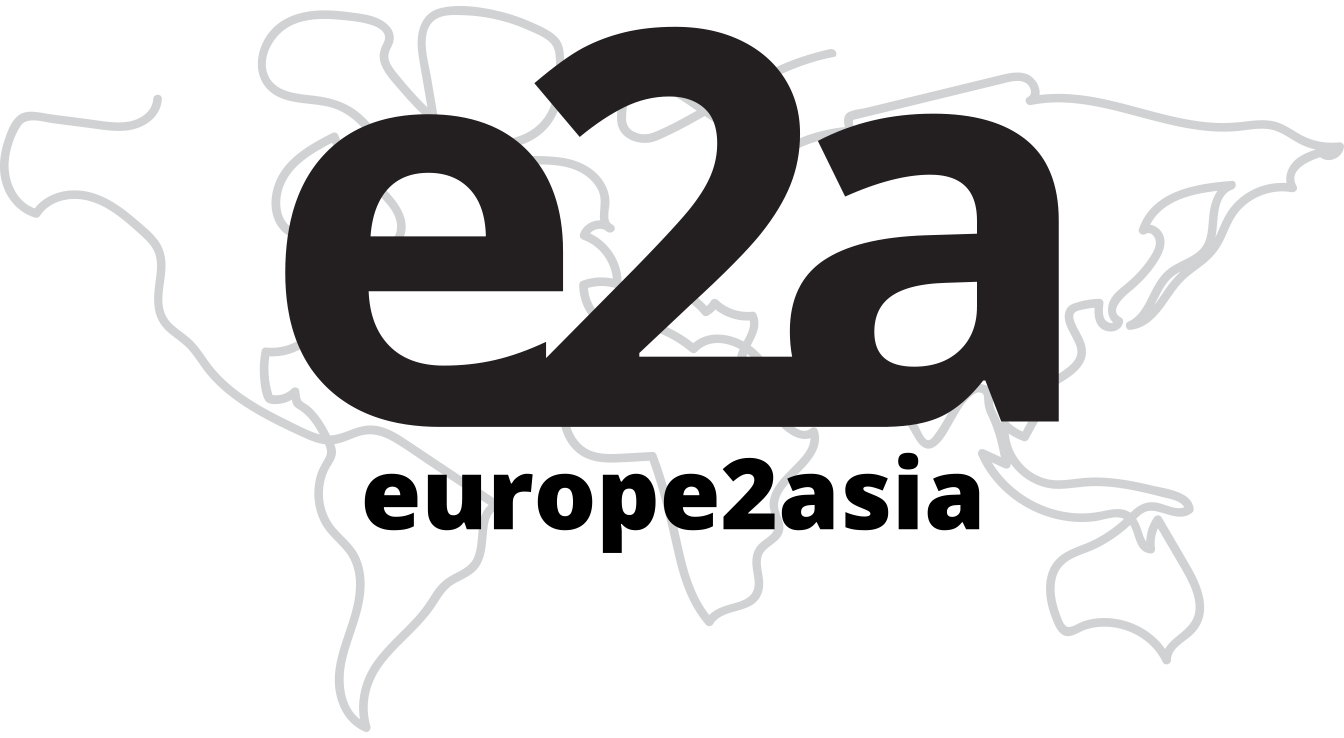- +84 904488850
- [email protected]

Choose The Perfect Destination
Asia Pacific Travel is a full-service travel agency that aims to provide a hassle-free travel experience for their clients in Vietnam and beyond.
Beach Getaway
Escape to paradise with our beach getaways in Vietnam. Experience pristine sands, crystal-clear waters, and stunning sunsets in some of the most beautiful beach destinations in the world.
Halong Bay Luxury Cruises
Experience the ultimate luxury cruise in Halong Bay with our exquisite offerings. Sail on a stunning vessel and immerse yourself in the breathtaking natural beauty of the UNESCO World Heritage Site.
Northern Vietnam
Uncover the magic of Northern Vietnam, experience the breathtaking natural beauty of the region
Central Vietnam Highlights
Embark on a journey of discovery through the breathtaking underground landscapes of the region.
ASIA PACIFIC TRAVEL | Your Guide to an Enchanting Vietnam Experience
Our tour plan is to fulfill your dream.
Asia Pacific Travel provides discount tour programs to Vietnam, Laos, and Cambodia. Our company’s head office is based in Hanoi Capital with branches offices are in Danang and Ho Chi Minh city with many reliable local providers so that we are able to offer good tailor-made tour programs and reservations for hotels in Vietnam with great savings.
Years of Experience
Customers served
Overall Rating
Top Rated Tours
Top Rated Tours offer unforgettable experiences, including exploring stunning natural landscapes, tasting delicious cuisine, and immersing in the rich culture and history.
VIETNAM SPECTACULAR 14 DAYS
14 days 13 nights
More Detail
Send Inquiry
Three days Mekong Delta Tour (3 days 2 nights)
3 days 2 nights
Vietnam Tour set departure 12 days 11 nights
12 days 11 nights
Discovery the North of Vietnam 5 Days 4 nights
5 days 4 nights
The World Heritage Sites of VietNam 14 days 13 nights
Vietnam fascinating 12 days 11 nights, essential highlights 10 days 9 nights.
10 days 9 nights
Pearls of Vietnam 11 days 10 nights
11 days 10 nights
The southern tour of Vietnam 5 days 4 nights
Popular destinations.
View All Destinations
Tour Activities
Beach Holiday
Classic Tour
Family Tours
Adventure Tours
Culinary Tours
Recommended Tours
Sena cruises 2 days 1 night.
2 days 1 night
Mai Chau Pu Luong hiking and Ho citadel 3 days 2 nights
Paradise beaches package 14 days 13 nights, hoi an ancient town- beach vacation packages (6 days 5 nights).
6 days 5 nights
The Heritage sites of Central Viet Nam 5 days 4 nights
Testimonials.
Edmonton, Canada
Asia Pacific Travel Co organized our 2-week private tour throughout Viet Nam. I highly recommend this travel company. The hotels they arranged were great. Most importantly, they were very flexible. The price was very reasonable for our trip and I would book again with this company.
Emily Foster
Our trip to Vietnam was truly great. I have to stress that all services provided by the company met and even exceeded our expectations. We will keep in contact if should we go to Vietnam again and we would definitely recommend their services if anyone asks.
Oregon Coast, Oregon
Asia Pacific helped us put together a great trip. Our guides and drivers were great and knowledgeable. They were helpful easy to talk with and explain limitations. I look forward to planning my next trip with them.
Kuala Lumpur, Malaysia
Thank you to Asia Pacific Travel for Vietnam Tour. All of us were very happy with the entire tour. I could say that Asia Pacific Travel is a recommendable reliable and trustworthy travel agent with a committed staff that had strive for their excellence.
Elizabeth Brown
Czech Republic
We were very happy with the entire tour provided Good Hotels, Good Food, and knowledgable Guide. I could say that Asia Pacific Travel is a recommendable reliable and trustworthy Travel agent with committed staffs that had strive for their excellence.
Mr Paul Stewart
Asia Pacific helped my family throughout our entire visit. They were helpful and the most accommodating. I was also very pleased when one of their representatives, Hai, came to visit me personally at my hotel to ensure our experience was nothing less than perfect.
Stay up to date with the latest travel trends and news.
View All Post
Asia Pacific Travel: Connecting at ITB Berlin 2024
Asia Pacific Travel is thrilled to announce our participation in ITB Berlin, one of the world's leading travel trade shows, taking place from March 5 to 7, 2024.
Unveiling the Magic of Ha Long Bay with Asian Pacific Travel
Experience Ha Long Bay's captivating beauty with Asian Pacific Vietnam. Discover breathtaking landscapes, mystical caves, and fascinating islands
Happy Lunar New Year 2024
Wishing you a healthy and HAPPY LUNAR NEW YEAR of the Dragon 2024!
Tailor-Made Tours: Asia Pacific Travel Creates Personalized Experiences
Welcome to Asia Pacific Travel, where we specialize in crafting unique and unforgettable tours tailored to your specific preferences
Top 3 best-seller packages of Asia Pacific Travel
Unforgettable adventures await with Asia Pacific Travel's top 3 best-seller packages in Vietnam. Explore breathtaking landscapes, immerse in vibrant culture, and create lasting memories.
ASIA PACIFIC TRAVEL LTD
Your reliable travel partner in Vietnam, Laos and Cambodia
Hanoi Head Office : 87 Hoang Quoc Viet Street, Hanoi, Vietnam
Tel: +84 24 38364212 / +84 24 37568868
Hochiminh City Office: Room 3A2, First floor, Toong Office, 126 Nguyen Thi Minh Khai Street, Distric 3, Hochiminh City
Tel: +84 28 38333388
Hotline : +84 904488850 ( WhatsApp, Viber, Zalo )
Email : [email protected]
Introdution
CEO Message
Awards & Activities
Booking Conditions
Privacy & cookies
Online Payment
Sign up for our email newsletter
Request a quote.
Thank you, we will get back to you shortly after receiving the information.
Tải về tài liệu
Tư vấn cho tôi

Imagine Asia
TRAVEL WITH IMAGINATION...
ImagineAsia Travel specializes in deluxe private tours and custom-designed travel to the Asia/Pacific region. Whether you’re looking for a cultural adventure, culinary experience, active vacation, honeymoon location, luxury resort, Asian spa, or anniversary retreat, we can tailor your travel to your time frame, budget and especially your expectations.
Custom-designed itineraries based on your tastes and budget for the perfect vacation.

Destinations
COME EXPLORE WITH US
If you have not traveled to Asia before, get ready to experience a part of the world like no other - where ancient traditions and cultures come alive in a kaleidoscope of colors, and where new experiences, sights, sounds, and tastes await around every corner. For the Asia connoisseur, there is no shortage on amazing places to discover and rediscover. Explore the possibilities each country has to offer, and whichever you choose, be prepared for a trip of a lifetime!
Photo Gallery
Asia is a kaleidoscope of colors
I often decribe Asia as a "point and shoot" part of the world. Everywhere you turn you'll find an amazing shot. A true photographer's heaven.
SEND AN EMAIL

Asia Travel Agents & Reviews
- Featured Tours
- Travel Agents
Customers rate Zicasso's travel referral service 5 on a scale of 1 to 5 based on 1541 reviews on Trustpilot
We match you with top tour companies that specialize in the trip you want, whether it's a customized private tour or a group tour.
Our Asia travel agents unlock the magic of this diverse continent. Whether you seek spiritual enlightenment, culinary wonders, outdoor adventures, or cultural connections, our specialists curate quintessential Asian experiences. Describe your ideal preferences and interests and our travel agencies in Asia craft a customized itinerary just for you. With intricate regional knowledge and relationships, our experts plan for iconic sights while revealing hidden gems. For insider access, seamless coordination, and unique local flair, our Asia travel agencies collaborate to make your trip unforgettable. Let us guide you through the splendors of Asia for an adventure you’ll forever cherish.
Discover our Asia travel agents, the top 10% of local specialists
Our Asia travel agents unlock the magic of this diverse continent. Whether you seek spiritual enlightenment, culinary wonders, outdoor adventures, or cultural connections, our specialists curate quintessential Asian experiences.
Describe your ideal preferences and interests and our travel agencies in Asia craft a customized itinerary just for you. With intricate regional knowledge and relationships, our experts plan for iconic sights while revealing hidden gems.
For insider access, seamless coordination, and unique local flair, our Asia travel agencies collaborate to make your trip unforgettable. Let us guide you through the splendors of Asia for an adventure you’ll forever cherish.
Life-Enriching Travel
Trips curated by the world’s top destination experts
Concierge-level service leading up to and during your trip
Unique, exclusive experiences and insider access
Zicasso in the News

Maggie's Travel Agency
Based on 3 reviews
Destinations:
Verified review.
The trip was unforgettable and very well organized by Zicasso's travel partner. Other than one or two very small issues, which could be improved and are not necessary to mention here, everything was great.

Charlotte's Travel Agency
Based on 43 reviews
We had a fabulous time. It was one of our all-time favorite trips. The places recommended and chosen by Zicasso’s planner and her company were perfect for us and covered well the varied interests of three people. She did an outstanding job and was very knowledgeable, sensitive to what we wanted, and responsive. She was also a genuinely friendly, warm, and wise person. Japan was utterly fascinating and wonderful to experience. It is a perfect travel destination for Americans. It is just like here – busy, modern, technologically advanced, affluent, sophisticated, except everything is different. Our guides were just wonderful and we learned so much from listening to and talking with them. They were very charming, very intelligent people who were very sweet to us. They, in their personalities, kindness, and knowledge, were a major part of the trip. I really could spend the rest of the review telling you about how wonderful they were and how they extended themselves for us – perfect guides who became friends.

Jeremiah's Travel Agency
Based on 107 reviews
The trip with Zicasso’s tour operator was truly unforgettable. From the moment we booked with them to the very last day of our vacation, everything was seamlessly organized and executed. The attention to detail was impeccable, ensuring we could relax and fully immerse ourselves in the beauty and culture of Vietnam and Thailand without any worries. The itinerary they crafted for us was well-balanced, offering a perfect mix of sightseeing, cultural experiences, and relaxation. The accommodations were luxurious and exceeded our expectations, providing a comfortable retreat after each day's adventures. The tour guides were incredibly knowledgeable, passionate, and friendly, enriching our experiences with their insights and local expertise. They made sure we didn't miss out on any hidden gems and helped us navigate through each destination effortlessly. Overall, our travel company exceeded our expectations in every way possible. We highly recommend them to anyone looking for a premium travel experience in Asia. Their attention to detail, personalized service, and dedication to customer satisfaction truly set them apart.
Get matched with our top travel agencies
Tell us about you trip and preferences. We will hand pick the right travel agency for you.
Get Matched

Jay's Travel Agency
Based on 283 reviews
The agent from Zicasso’s travel company created the perfect Sri Lanka itinerary for our family with two young kids (aged three and six). It was a good blend of cultural sights, safari, and beach, and the travel times between places weren't too long. The selected hotels were wonderful. Our agent was very responsive to our requests.

Alex's Travel Agency
Based on 64 reviews
We highly recommend this travel agency that Zicasso connected us with. The level of service we received from the agency was exceptional from the very start, all the way to the end of our trip. This is the third trip we have booked with Zicasso, and like all the others, it did not disappoint. We really liked the fact that our agent was based in Japan. We felt like it would be nice to be able to contact an agency in the same time zone in case of any issues. After discussing what we were interested in, they crafted a wonderful itinerary that gave us a great introduction to this beautiful country and the culture. All the details were well thought of, like getting us seats on the Shinkansen where we could put our luggage behind us and on the side, where we were able to see Mount Fuji. It made our travel stress-free! All of the accommodations and transportation were well appointed. It was nice to have transportation ready for us to be picked up instead of waiting at a taxi line. Everything was on time and seamless. We loved every single one of our guides, who patiently explained traditions and provided the history of every place we visited. They were also very accommodating with our requests. We loved all the places they took us for lunch. It gave us a taste of each of the regions we visited. Our agent also booked my birthday dinner at a fantastic restaurant in Kyoto. We had an amazing view of the pagoda at the nearby temple. We felt very well taken care of throughout our entire trip! Don’t hesitate to book!

Carl's Travel Agency
Based on 56 reviews
Our trip to Japan can be summed up in one word… perfect. We saw the things we wanted to see and were introduced to things we had no idea existed, all because of the careful planning by Zicasso’s travel company and the guides they use.

Murray's Travel Agency
Based on 438 reviews
We wanted to let you know how much we appreciated all of the local guides. Our guide in Cape Town was wonderfully knowledgeable, kind, and accommodating. Our guides in Victoria Falls were also wonderful. The private game reserve was the perfect choice, with a warm, welcoming crew, lovely accommodations, and knowledgeable professional guides and trackers. And delicious, abundant food. The hotel at Victoria Falls was also lovely, with very friendly, professional staff. Everyone across the board was helpful, accommodating, and respectful of our mom’s need for a little extra help (with the exception of Lufthansa in Frankfurt). We didn't book them through you, but wanted to give you the heads up in case you use them in the future for disabled or mobility-impaired guests. Every single person we encountered in Africa was kind and respectful, and we really appreciated that. Thank you for working with us to create a truly special experience.

Andrea's Travel Agency
My wife and I had a fantastic three-week trip to Sri Lanka in December 2018 and January 2019. This tour company provided us with an itinerary that allowed for a diversity of experiences, giving us an excellent snapshot of the culture, people, food, and natural landscape of Sri Lanka, a country that has something to offer all travelers. We enjoyed the historical sites in the Cultural Triangle, the wildlife in Gal Oya National Park, hiking in Knuckles Mountain, relaxing in Tea Trails, and walking on the beach in Habaraduwa. Kudos to this tour company for catering to our travel interests. Both the company and the country did not disappoint!

Show more agents
Expert Tips for Discerning Travelers
- Central Asia
- Malaysia Borneo
- Malaysia Peninsular
- New Zealand
- Papua New Guinea
- Doha, Qatar
- Iconic Sites
- Eco-Friendly
- Off The Beaten Path
- Countryside
- Best of ATJ
- Custom Trips
- Private Groups
- Our Partners
- ATJ Foundation
CUSTOM TRIPS
Custom isn’t complicated.

Completely personalized custom trips are our specialty. We delight in using our extensive first-hand knowledge of Asia and the Pacific to craft itineraries that perfectly fit your unique travel style and preferences.
ATJ has been awarded THE best tour operator by the Travel + Leisure 2023 World’s Best Awards survey. We couldn’t have done this without you, and we could not be more proud of our local and international team.
Sit back and relax. We take care of all the logistical details, allowing you the opportunity to fully embrace every moment of your Asia Pacific travels.
Discuss your specific travel preferences with your personal Travel Expert. From destination to duration to daily activities, everything is flexible.
Accompanied by an expert local guide, you experience a personal, insider’s introduction to the countries you visit.
FLEXIBLE PAYMENT PLANS
For all travelers, deposits and payments (per person) are required as follows:
At time of booking: A non-refundable deposit of $1,000, per person, is due
At time of confirmation: 50% of remaining land cost, per person, is due
For all airfare booked by ATJ (including flights within Asia): 100% of the airfare costs are due
60 days prior to departure: Final payment is due
If your booking is made within 60 days of departure, the entire cost of the trip must be paid at the time of confirmation in order to secure arrangements
WE’VE GOT YOU COVERED
Travel Insurance
Your trip cost includes the following types of insurance:
$200,000 per person for emergency medical evacuation expenses, including repatriation of remains.
$5,000 per person for emergency medical care due to accident/sickness
ATJ does not provide trip cancellation, interruption, air ticket cancellation, lost baggage, or supplemental medical insurance. We highly recommend that you purchase this additional coverage. If using our recommended provider, Arch RoamRight, you must purchase your policy within 21 days of making your initial trip payment/deposit to qualify for the pre-existing conditions benefit. Other carriers may have different terms for preexisting conditions. Additional information will be sent at time of booking.
sign up for our Newsletter
Stay current with all the latest being offered from ATJ, as well as updates on Asia Destinations.

- Make a Payment
- Travel Resources
- Partners Login
- Partner Resources

For media inquiries, please contact [email protected]
We use cookies to enhance user experience. By interacting with our site we assume you are happy with this. To learn more, visit our Privacy Policy page .

Europe2Asia
Asia Pacific Travel
Pioneering the path of vietnamese tourism.
With two decades of exceptional service in the heart of Vietnam, Asia Pacific Travel Co., Ltd stands as a testament to the vision and perseverance of Mr. Nguyen Giang Nam. Founded on June 21, 2002, this esteemed travel agency evolved from offering simple short-day tours to panoramic voyages across Vietnam’s picturesque landscapes.
In the early days of tourism’s digital revolution, Asia Pacific Travel was at the forefront, harnessing the power of information technology to cater to the burgeoning global tourism demand. Their pioneering spirit didn’t stop there. As the company flourished, they expanded their presence with representative offices in Vietnam’s major cities like Ho Chi Minh and Da Nang. This strategic move ensured that international visitors received a warm welcome right from Vietnam’s International Airport.

Address: 87 Hoang Quoc Viet Street, Hanoi, Vietnam
Tel: +84 24 38364212 / +84 24 37568868
Our Services
Quality service and professional growth remain pivotal to Asia Pacific Travel’s operations. Over the years, the company’s dedicated team has undergone rigorous training both locally and internationally, courtesy of sponsorships from the European Organization CBI. This dedication to excellence ensures that they remain at the forefront of serving international tourists, offering them unparalleled experiences in Vietnam, Laos, and Cambodia’s globally recognized cultural heritage sites.
Asia Pacific Travel’s commitment to excellence is not just self-proclaimed. It’s echoed in the hundreds of positive remarks from satisfied tourists who, after their immersive experiences, commit to revisiting Vietnam or recommending the company’s unparalleled services to their peers.
A Word from the Visionary: Mr. Nguyen Giang Nam
“In 2002, my family’s shared passion for travel and the allure of Vietnam’s pristine beauty gave birth to Asia Pacific Travel Vietnam. Our mission was clear: to offer unparalleled travel experiences that resonate with happiness and a spirit of discovery. Over 20 years later, that mission remains unshaken. Every day, we innovate, strive, and seek to break barriers, all with the aim of offering our clients value-filled travel experiences. I’m eternally grateful to our partners who’ve journeyed with us through every peak and trough. Their unwavering support has molded Asia Pacific Travel into one of Vietnam’s premier travel agencies. As we share Vietnam’s captivating charms with the world, we eagerly await and welcome feedback, always striving to enhance the happiness our clients find in every journey.”
be part of our family
Get a free quote, we are here to help!

- +61 7 3711 6828

Asia Pacific Travel & Tours
Your trusted travel expert.

Asia Pacific Travel & Tours (APTT) is an Australian-owned travel agency operating since 2002, specialising in air, land and sea travel services across Asia and the world.
As a retail travel agency, we partner with airlines and wholesalers to book and purchase air-tickets, holiday packages, tours and accommodation for our clients at the best rates.
With so many options to choose from, we understand that crafting the perfect itinerary can be overwhelming and time consuming. We do the planning work for you so that you can enjoy your trip stress-free. We focus on tailoring travel services to suit your personal needs, budget and travel preferences – whether that is a relaxing holiday, luxurious cruise, or action-packed adventure.
Our mission is to go above and beyond for our valued clients and to ensure that your trip is enjoyable and unforgettable.
Let us be your trusted travel expert .
Why Choose APTT
Experienced travel experts, excellent services and professionalism, informative and personalised travel advice, best value rates, discounted travel insurance, multi-lingual team with fluency in english, mandarin and cantonese, testimonial.
We have used Asia Pacific Travel & Tours for over 20 years. In all these times, we have received excellent service from Jenny and her staff. Nothing was too much trouble. - Even after hours and weekends. During these past 20 + years, the Austral-Asian Doctors Association had had repeated overseas tours with 80 to 160 participants travelling overseas. All trips were handled by Asia Pacific Travel & Tours. Never had a single occasion when all bookings & documentations had any failure. Jenny had been meticulous, efficient & absolutely trust worthy. We cannot recommend Asia Pacific Travel & Tours more ! Let's hope after Covid and travels resume, we can travel the world again!
Our family has been with Jenny and her team for over 20 years. Being frequent travellers to Asia, Europe, and the Americas, we always know we could trust Jenny to organise the best itineraries. The number of times Jenny stepped in to offer help during emergencies is something we are perpetually grateful. We highly recommend Jenny and her team. We know we are in good hands and could not ask for more.
My aunt introduced Clara from APT to me and my travel plans and holidays have changed significantly. Service is just impeccable. What I love is that she isn't pushy about research you give her (so she won't try then to force you to purchase). They're patient - giving you time to decide on the perfect itinerary. They work hard, will do overtime and works nights and weekends if required. Thanks for making my holidays so affordable and best value!!
If you are looking for a fantastic travel agent that will go far beyond your expectations, give Jenny a call. She is very professional and passionate when it comes to planning a big trip overseas. She is very familiar with how foreign cultures operate and has great people skills and contacts. Her attention to detail is unmatchable, She will tailor a holiday to your standards and also your budget.

Managing Director
Jenny is the Managing Director at APTT, and has over 30 years of experience in the travel industry. She has a passion for travel and has travelled extensively all over the world.
Destinations
- New Zealand
- Ocean Cruise
- River Cruise
- Adventure Cruise
Rail/Rental Car
- International Rail
- Private Car Rental

- 443-569-2641
- Asia Pacific
Discover the Asia Pacific with Red Lion Travel Agency
Uncover the beauty and culture of the asia/pacific region.
Asia and the Pacific, a vast and diverse region, beckon travelers with their rich history, stunning landscapes, vibrant cultures, and mouthwatering cuisine. Red Lion Travel Agency invites you to embark on a journey of discovery across this enchanting part of the world. From the bustling cities of Asia to the idyllic islands of the Pacific, let us introduce you to the wonders of this captivating region.

The Asia Pacific
Asia and the Pacific offer an array of experiences that appeal to all types of travelers. Here’s why you should consider exploring this remarkable region.

Our Asia Pacific Destinations:
Asia's treasures.
Explore the enchanting cities of Asia, such as Tokyo, Bangkok, Singapore, and Beijing. Uncover the mysteries of Angkor Wat in Cambodia, traverse the Great Wall of China, and discover the tranquility of Kyoto.
Island Paradise
Escape to the pristine beaches of the Pacific Islands, including Fiji, Bora Bora, Tahiti, and Hawaii. Snorkel in crystal-clear waters, relax in overwater bungalows, and experience the warmth of island hospitality.
Natural Wonders
Witness the breathtaking landscapes of New Zealand, Australia, and the Philippines. From the dramatic fjords of New Zealand to the Great Barrier Reef, these destinations are a nature lover’s dream.
Culinary Journeys
Delight your taste buds with the diverse cuisines of Japan, Thailand, Vietnam, and Malaysia. Explore street food markets, dine in Michelin-star restaurants, and savor exquisite dishes.
Cultural Immersion
Immerse yourself in the traditions and festivals of the region, from Diwali in India to Songkran in Thailand and the Maori culture of New Zealand.
Cruise Packages
From shore excursions to onboard activities, we help you plan your cruise experience down to the smallest detail. Explore new cultures, embark on thrilling adventures, or simply relax and unwind.

Group Cruises
Planning a group cruise? Let us handle the logistics. We can organize group cruises for families, friends, corporate teams, and special occasions.
What we offer
Why explore the asia pacific.
Lorem ipsum dolor sit amet, consectetur adipiscing elit. Ut elit tellus, luctus nec ullamcorper mattis, pulvinar dapibus leo.
Cultural Diversity
Immerse yourself in a tapestry of cultures, from the ancient traditions of Asia to the Polynesian heritage of the Pacific Islands.
Natural Beauty
Witness awe-inspiring natural wonders, including lush rainforests, pristine beaches, towering mountains, and unique wildlife.
Culinary Adventures
Savor the flavors of Asia and the Pacific, where every meal is an opportunity to explore new tastes and culinary delights.
Historical Treasures
Discover the rich history of the region through ancient temples, historic sites, and the stories of local communities.
Family vacations
Pretium nisi malesuada volutpat ultricies inceptos pulvinar dapibus sapien ornare
Luxury experiences
Your asia/pacific adventure begins here.
Whether you’re seeking adventure, relaxation, cultural experiences, or a combination of it all, we can tailor your journey to match your interests and preferences.
Ready to explore Asia and the Pacific? Contact Us to start planning your journey today!
Ready To Sail?
Your dream cruise adventure awaits with Red Lion Travel Agency. Explore the world’s most stunning destinations, all while enjoying the comforts of a luxurious cruise ship. Start planning your cruise vacation today and experience the magic of the open sea.
The world is a book and those who do not travel read only one page
Signup our newsletter to get update information, news & insight..

Welcome to Red Lion Travel, where your travel dreams come to life! We’re not just another travel agency; we’re your dedicated partners in crafting unforgettable journeys
Experiences
- Group Travel
- Family Travel
- Romance Travel
- Solo Travel
- Odenton, Maryland USA
Travel Services
- Hotels & Resort
- Car Rentals
- Tours & Activities
Destinations
- Central America
Quick Links
- Privacy Policy
- Terms & Conditions
Best Asia Tour Companies
Search 477 Asia tour operators and travel companies, with 10,498 reviews.

Exodus Travels
Health Safety +
Featured Asia Trips

G Adventures

Intrepid Travel

Luxury Gold

Insight Vacations

Sign in to see which companies give additional savings to Travelstride Members (it’s free)

Himalayan Sanctuary Adventure

Memphis Tours

Asia Authentic Travel

Outfitter Nepal

CroisiEurope
Health Safety

Exotic Voyages

Realistic Asia

Charlie The Traveler

477 match your criteria (1 - 20 shown)

View Asia trips
Plan your Asia trip
Asia Reviews & Ratings
Christopher
When I was researching potential tours of Southeast Asia, I was looking for Thailand (Bangkok and Chiang Mai specifically) and Cambodia (Siem Reap/Angkor Wat specifically)
When I was researching potential tours of Southeast Asia, I was looking for Thailand (Bangkok and Chiang Mai specifically) and Cambodia (Siem Reap/Angkor Wat specifi...
The experience we had on this trip was life changing
The experience we had on this trip was life changing. We learned so many things about the people and cultures in the 4 countries we visited that it gave us a new app...
SE ASia is a culture shock if most of your travel has been in N
SE ASia is a culture shock if most of your travel has been in N.A. Or Europe. It was one new experience after another. We were not that prepared for such large citie...
My first time in Southasia, loved it
My first time in Southasia, loved it. Enjoyed listening to the loc...
This trip was unforgettable for me
This trip was unforgettable for me. It really opened my eyes to the history of these countries and the beautiful resilient people who live there. I love that the G/N...
See all Asia reviews
Related Trips and Tours
Trip planning.

Asia Pacific Destinations
Your travel consultant.
Asia Pacific Destinations has open it's door here in Paifica< California to connect you in Asia, Europe, and the Middle East. With an office in the Philippines , our company is made up of travel specialists with expertise in creating memorable and hassle-free trips for our clients.
Since 2008, we have developed longstanding relationships with travel partners and suppliers all over the world. We provide everything from customized itinerary... Read more
Our Journey
Personalized trip experiences.
Related Travel Research
Asia pacific online travel overview ninth edition: online travel agencies.
Free for Open Access Subscribers
Varied infrastructure and penetration, digital payments adoption and regulations make for an uneven e-commerce landscape across Asia Pacific. While emerging online markets will drive online travel agency (OTA) growth in the region, OTA growth in the mature online markets such as Australia-New Zealand and Japan remains robust in local currency terms. Asia Pacific's (APAC's) OTA online channel share will increase from 42% in 2015 to 46% by 2020, and gross bookings will reach US$96.5 billion in that same year.
Phocuswright's Asia Pacific Online Travel Overview Ninth Edition: Online Travel Agencies presents market sizing and projections for the total and online leisure and unmanaged business travel markets from 2014 – 2020. The report analyzes competitive dynamics throughout APAC, with insight into OTA gross bookings and growth rates in China, Japan, Australia/New Zealand (ANZ), India, Southeast Asia and Northeast Asia. Highlights include:
- Total OTA market and online leisure/unmanaged business travel bookings for 2014 – 2020
- Segmentation for four major APAC markets: ANZ, India, China and Japan, plus Northeast and Southeast Asia regions
- Analysis of the growth and diversification of OTA startups and existing companies
- Mobile share of OTA bookings from 2014 – 2020 for ANZ, India, China and Japan
- Analysis of how deals and discounts effect mobile sales
Purchase Phocuswright's Asia Pacific Online Travel Overview Ninth Edition: Online Travel Agencies now to navigate opportunities and obstacles in the Asia Pacific OTA market.

What is Open Access
An Open Access subscription provides company-wide access to the whole library of Phocuswright’s travel research and data visualization.
Curious? Contact our team to learn more:
What is open access+.
With Open Access+, your company gets access to Phocuswright's full travel research library and data visualization PLUS Special Project deliverables.
Provide your information and we'll contact you:
Curious contact our team to learn more:.
- Join Us for: ◆ Arival 360 | San Diego 2024, 30 Sep - 3 Oct 2024 ◆ Arival | Activate Edinburgh, 23-25 Nov 2024 ◆ Arival 360 | Valencia 2025, 28-30 Apr 2025
- 24 Jun 7pm EDT / 25 Jun 9am AEST The Outlook for Experiences in Australia & New Zealand Webinar 30 Sep - 3 Oct 2024 Arival 360 | San Diego 2024 23-25 Nov 2024 Arival | Activate Edinburgh 2024 28-30 Apr 2025 Arival 360 | Valencia 2025
- All Events >
- Insider Pro Meetup | A Job Well Done – Get Started Selling Corporate Tours US & Europe Traveler Trends Webinar: Insights for a Successful Summer Innovation Showcase @ Arival 360 | Berlin 2024 The Attractions Forum @ Arival 360 | Berlin 2024 Arival 360 | Berlin 2024 Insider Pro Meetup - Strategies to Scale
- Arival Spotlight Awards
- Arival TourReview Spotlight Awards
- Introducing Spotlight Awards
- TOURREVIEW SPOTLIGHT WINNERS ORLANDO 2023
- METHODOLOGY
- TOURREVIEW SPOTLIGHT AWARDS FAQS
- Arival Spotlight Winners
- Arival Spotlight Submissions
- Spotlight FAQ

ARIVAL 360 | SAN DIEGO
30 september – 3 october 2024.
Insider Pro Access Members save 20%
THE event of the year for solutions-focused in-destination experience creators and sellers
Save up to $660 with the Spring Savings ticket
- The Ultimate Social Media Guide for Tour Operators Guest Communication for Innovation Showcase Win 5 Ways Experience Businesses Are Using AI Today Tour Guide Training: The Best Tips & Tools for Your Guides
- Distribution
- Operator Stories

ARIVAL | ACTIVATE EDINBURGH 2024
23-25 NOVEMBER 2024
THE event of the year for the European in-destination experiences industry
Save up to £440 with the Super Early Bird ticket
- The State of Experiences in Australia & New Zealand The Outdoor Adventure & Activities Traveler AI in Experiences: Case Studies in Emerging Tech Arival Guide to AI in Experiences
- REPORT SERIES: The 2024 U.S. Experiences Traveler
- Search All >

ARIVAL 360 | VALENCIA
28-30 april 2025, save up to €910 with the super early bird ticket.
- Marketing with Google
- Culinary Experiences Guide
- Arival Booking System Guide
- How to Choose a Booking System | CHECKLISTS
- Insider Pro Access membership
- Insider Free membership
- Special Offers
- Arival ProShield Insurance
- Employers Dashboard
- Job Board – Post A Job
- Search Our Talent Pool
- Job Seeker Dashboard
- Join Our Talent Pool
- Job Resources
- Tour Guides & Directors
- In-destination Specialty Career
- Marketing & PR
- Operations & Logistics
- Water & Theme Parks
- All Job Categories >
- Join Arival Insiders Free
- Subscriptions
- Group Subscriptions
- Members FAQ
Top 20 OTAs to Watch in Asia Pacific
With online travel agencies rising rapidly as the region recovers, we put together a list of tours and activities OTAs in Asia Pacific to help you grow your bookings

by Janelle Visser | 26 May 2023
While most of us in tours and attractions are familiar with the bigger global online travel agency (OTA) brands, such as GetYourGuide, Viator, TUI Musement, Headout, Airbnb, Expedia, Booking.com, Groupon and others, there are a growing number of OTAs specifically focused on the Asia Pacific region.
OTAs were the fastest growing booking channel pre-pandemic, and even more so as our industry speeds toward recovery. OTA gross bookings will grow far faster than other channels, achieving 152% growth over 2019 levels in just a few short years, Arival research shows .

For tour operators and activity and attraction suppliers looking to grow their bookings through distribution, expanding to new regions or reaching out to new customer segments within Asia Pacific, take note of these OTAs. Many are focused on offering tours, activities and attractions within particular regions or destinations within APAC, and/or a particular geographic customer market.
No company has paid Arival to be included on this list; these are presented in alphabetical order (within each category). Have we missed a brand? Let us know: [email protected]
Regional OTAs focused on tours and activities
The following are large, growing OTAs based in APAC that focus specifically on the Asia Pacific traveler market, and list tours, activities, attractions and experiences for destinations primarily in the Asia Pacific region.

Based in Taipei with offices throughout East and Southeast Asia, KKDay is an OTA focused on experiences for Asian travelers to Asia and select global destinations. There are over 30,000 experiences on KKDay’s platform, representing over 90 countries.

Headquartered in Hong Kong, Klook is a tours and activities OTA for Asian travelers to destinations throughout Asia and (more recently) global destinations. Their primary customer base is young travelers, aged 20-45, and they list nearly 500,000 activities in over 1000 destinations. (Don’t miss Klook COO Wilfred Fan on the main stage at Arival Activate | Bangkok 2023 !)
Regional online travel sites with a tours and attractions division:
These online travel sites may be more generally focused on flights, accommodations and/or other transportation primarily in APAC, however they have some form of experience booking options through their platforms.

MakeMyTrip is an OTA for Indian travelers with an activities division for booking experiences in India and internationally. They list over 18,000 activities in over 100 cities throughout India, Asia and globally.

Pelago is a tours and experiences OTA under Singapore Airlines, for travel within the Asia Pacific and to several European and U.S. destinations — anywhere Singapore Airlines flies. Pelago launched in beta in 2020 and officially in 2021, and currently lists over 2000 experiences.
Rakuten Travel Experiences

Formerly Voyagin, the travel experiences branch of Japan-based e-commerce site Rakuten is an OTA for travel to Japan, Asia, and select destinations globally. Rakuten Travel Experiences lists activities in over 750 destinations, and benefits from Rakuten’s wide reach of 100 million users in Japan and 1.5 billion globally.

Traveloka is a general travel OTA based in Indonesia and focused on Southeast Asian travelers and destinations, which has an activities division for booking “Xperiences.” Xperiences operates in seven Southeast Asian countries, and boasts 50 million active users and 500,000 bookings daily.

Formerly Ctrip, Trip.com is the largest OTA serving the Chinese traveler market. Attractions and tours are bookable through the travel guide section of their site. Trip.com boasts over 400 million users worldwide, with over 200,000 tours, activities and attractions bookable in over 170 countries and 2000 destinations globally.

Based in India, Yatra is a general travel OTA for Indian travelers that includes a division for booking activities to a handful of destinations around India, Dubai and Southeast Asia, and another division for “monuments” which sells tickets to cultural attractions around India.
Insider Pro Access Members Save 20%
THE event of the year for solutions-focused In-Destination Experience creators and sellers
Country or region-specific OTAs: Australia & New Zealand
If you are looking to grow your bookings from particular markets, who may want to have a look at these OTAs that specialize in specific countries or regions in Asia Pacific.
This section includes OTAs that serve the Australia and New Zealand traveler market, and/or travelers to the Australia and New Zealand regions. Consider working with these OTAs if you want to expand into the Australia and New Zealand markets.
Adrenaline is an Australia-based OTA focused on offering over 2,500 adventure experiences to travelers visiting Australia, from hot air balloon rides to white water rafting to theme park passes.
ExperienceOZ

ExperienceOZ is an Australia-based OTA focused on tours, activities and attractions, targeted to domestic travelers in Australia and New Zealand. Over 2000 experiences are listed on their platform.
Red Balloon

RedBalloon is an OTA based in Australia focused on experiences and activities, with an emphasis on gifting experiences. RedBalloon — along with Adrenaline and ExperienceOZ — is part of Big Red Group, which lists over 14,000 experiences in Australia and New Zealand across its platforms.

Travello is an Australia-based OTA for tours and activities and a social network for travelers. Travello — and its experiences marketplace Backpacker Deals — lists experiences primarily in Australia and New Zealand, as well as a selection of experiences in other destinations globally. Travello has users in 180 countries and a monthly reach of 40 million people. ( Learn more about Travello on Arival here. )
Country or region-specific OTAs: East & Southeast Asia
This section includes OTAs that serve the East and Southeast Asian traveler market, and/or travelers to the East and Southeast Asian regions. Consider working with these OTAs if you want to expand into particular markets in East and Southeast Asia.

MyRealTrip is a tours and attractions OTA for Korean travelers to destinations both regional in APAC and to global destinations.
TakeMeTour is a Thailand-based OTA focused on tours and experiences with locals, and lists over 1000 experiences in destinations across Thailand and Southeast Asia.

Veltra is a Japan-based OTA for Japanese and international travelers, with over 13,000 experiences in over 4,500 destinations around Japan, Hawaii, and a selection of other international destinations. Founded in 1991, Veltra was a pioneer for online tour and activity booking as one of the first OTAs to enable travelers to book experiences online.

WAUG is a Korea-based tours and activities OTA for travel to Asian destinations, with experience listings in 187 in cities across Korea, Japan, Hong Kong, Singapore and the Philippines, as well as a growing number of destinations globally.
Country or region-specific OTAs: Southwest, South & Central Asia
This section includes OTAs that serve the Southwest, South and Central Asia traveler market, and/or travelers to these regions. Consider working with these OTAs if you want to expand into particular markets in these regions.
Indy Guide is a regional OTA, based in Switzerland but focused on tours with local guides in Central Asia for international travelers. Indy Guide lists experiences with over 2000 local providers throughout 15 Central Asian countries.

Thrillark is a Dubai-based tours, activities and attractions OTA focused on city experiences in the UAE and select international destinations. Thrillark currently has about 250 listings for tours, activities and attraction tickets in Dubai and the surrounding region.
Thrillophilia

Thrillophilia is an India-based tours and activities OTA targeted to Indian travelers for travel around India and to select destinations around Asia and globally. Thrillophilia lists over 12,000 activities from over 5000 suppliers in over 125 destinations, with approximately 3.5 million monthly users. ( Learn more about Thrillophilia on Arival here ).
Have we missed a brand? Let us know: [email protected] .
Become an Insider Pro Access member today and get access to the full library of Arival research, plus many other benefits such as free consulting sessions, special discounts and 20% off in-person events, starting from $179 per year.
Sign up to receive insights tailored for the in-destination industry as well as updates on Arival.

The Ultimate Social Media Guide for Tour Operators

Guest Communication for Innovation Showcase Win

5 Ways Experience Businesses Are Using AI Today

Take Part in Our Global Operator Survey
Already a member.
Username or Email
Remember me
Lost your password?
NEED TO REGISTER?
Included in Free Membership
Included in Arival Pro Membership
The Arival on-demand video library archive Access to the entire library of over 150 video sessions and webinars
Arival.guides Short, digestible research & trends reports delivering insights into our industry, such as The Tour Operator Outlook for 2021.
Arival.travel articles Topical articles about marketing, tech, operator business and operator stories in all areas of tours, activities & attractions & experiences
Job board access Find a job from our regular listings, post a resume to the talent network and learn strategies from the job resources articles
New webinars Helpful, instructional sessions covering subjects such as Mastering Facebook Ads, Grow Your Business and How To Work With OTAs — topics to help advance your business.
Discounts on all Arival in-person events 20% Discount on all Arival in-person events (save up to $300)* based on business type
Arival ProShield – Insurance program Access to tailored insurance solutions by Granite Insurance is available exclusively for Arival Insider Pro Access Members. Insider Pro Access Members also have access to a suite of resources from Granite Insurance including templates, forms and other informative documents.
Insiders Pro Access member exclusive webinars Paid membership-only webinars to deepen your understanding of important industry topics.
Job postings & talent directory Post jobs & connect with candidates most applicable to your business.
Private roundtables to connect, learn and engage Small, focused and intimate discussions exclusive to Arival Insider Pro Access members.
Full access to Arival’s library of in-depth reports Up to date, deep analysis of tourism topics ranging from Self-guided Tours to Sales & Distribution Trends and Outlooks, based on the data that defines the industry.
The latest on-demand videos Over 350+ on-demand videos featuring hot topics in tours, activities & attractions
Insider discounts in digital marketing, tech, e-learning, and more Save money on additional tools, services and learnings you need to run your business. Exclusive to paid members.

At Arival, we believe travel can make the world a better place. Our mission is to establish and inspire a diverse community of individuals and companies in the In-destination Industry by providing opportunities to gain insight, share knowledge and build connections. To make it possible for true collaboration, creativity, innovation, and idea exchange to thrive, we are committed to facilitating a welcoming and respectful community for all. This Conference Code of Conduct shares our community expectations and applies to all attendees, employees, exhibitors, speakers, sponsors, volunteers, and other participants at Arival- produced and sponsored events. We empower all participants in our community to actively engage in creating a friendly, inclusive and safe environment for all.
Arival’s core values include the following, and create an expectation for conduct at our events and in online community spaces:
We demonstrate a deep respect for human beings inside and outside our company and for the communities in which they live. We value integrity and strive to consistently interact with others in ways that are authentic, ethical, and fair. We are dedicated to transparency , committing to clear, open and honest communication. We actively pursue and advocate for inclusion, diversity and representation of varying cultural backgrounds, perspectives and ideas
Arival welcomes people from all cultural backgrounds, and does not discriminate on the basis of race, color, creed, gender (including pregnancy, perceived pregnancy, childbirth, breastfeeding, or related medical conditions), gender identity, religion (including religious dress and grooming), marital status, domestic partner status, genetic information, age, national origin or ancestry, military or veteran status, sexual orientation, physical or mental disability, or any other basis protected by federal, state, or local laws.
Accordingly, participants must refrain from displaying any demeaning, harassing, aggressive, or intimidating behavior or materials that would interfere with others’ experience and participation in our community.
If you witness or are subjected to inappropriate or disruptive behavior or have any other concerns, notify an Arival staff member as soon as possible.
Inappropriate or disruptive behavior will not be tolerated. Arival reserves the right to refuse entry to or remove any party from any event or community space at any time when participation or behavior create a disruption or hinder the event or enjoyment of the event by other participants. All determinations are at the sole discretion of Arival, and the decision of the Arival team will be final. Severe breaches of this Conference Code of Conduct may result in disqualification from participating in future events. Individuals expelled due to violating this Conference Code of Conduct will not be eligible for a refund or other consolation.
If you have questions regarding this Conference Code of Conduct or its implementation, please contact us at [email protected] .
Privacy Overview
Travel, Tourism & Hospitality
Industry-specific and extensively researched technical data (partially from exclusive partnerships). A paid subscription is required for full access.
- Most used online travel agencies Asia 2023, by country
Most used online travel agencies in Asia as of June 2023, by country or territory
- Immediate access to 1m+ statistics
- Incl. source references
- Download as PNG, PDF, XLS, PPT
Additional Information
Show sources information Show publisher information Use Ask Statista Research Service
Rakuten Insight
August 2023
June 12 to 30, 2023
73,601 respondents
16 years and older
Original question "Which of these online travel agencies have you used before? (choose all answers that apply)" Figures have been rounded. Number of respondents by country: China: 3,633; Hong Kong: 2,891; Indonesia: 6,055; India: 16,741; Japan: 535; South Korea: 3,817; Malaysia: 8,718; the Philippines: 4,860; Singapore: 5,215; Thailand: 10,685; Taiwan: 8,655; and Vietnam: 1,796.
Other statistics on the topic Tourism industry in the Asia-Pacific region
- Travel and tourism: share of global GDP 2019-2033
- Tourist arrivals SEA 2021, by country
Leisure Travel
- Number of international tourist arrivals APAC 2013-2022, by subregion
- Total travel and tourism GDP contribution Southeast Asia 2015-2033
To download this statistic in XLS format you need a Statista Account
To download this statistic in PNG format you need a Statista Account
To download this statistic in PDF format you need a Statista Account
To download this statistic in PPT format you need a Statista Account
As a Premium user you get access to the detailed source references and background information about this statistic.
As a Premium user you get access to background information and details about the release of this statistic.
As soon as this statistic is updated, you will immediately be notified via e-mail.
… to incorporate the statistic into your presentation at any time.
You need at least a Starter Account to use this feature.
- Immediate access to statistics, forecasts & reports
- Usage and publication rights
- Download in various formats
You only have access to basic statistics. This statistic is not included in your account.
- Instant access to 1m statistics
- Download in XLS, PDF & PNG format
- Detailed references
Business Solutions including all features.
Statistics on " Tourism industry in the Asia-Pacific region "
- Total travel and tourism GDP contribution APAC 2022-2033, by country
- Inbound visitor growth APAC 2021-2025, by subregion
- Outbound visitor growth APAC 2021-2025, by subregion
- Travel and tourism's direct contribution to employment APAC 2022, by country
- Travel services share of service exports APAC 2022, by country
- Travel services share of service imports APAC 2022, by country
- Online travel market scale APAC 2023, by country
- Value of international tourism spending APAC 2022, by country
- Value of domestic tourism spending APAC 2022, by country
- Value of domestic tourism expenditure Southeast Asia 2013-2022
- Most expensive cities for business travel APAC Q4 2022, by daily cost
- YoY change in monthly international tourist arrivals APAC 2023, by subregion
- Tourist arrivals ASEAN 2013-2022
- Tourist arrivals ASEAN 2021, by country or region of origin
- Monthly travel accommodation occupancy rate APAC 2020-2023
- YoY change in monthly number of hotel bookings APAC 2023, by subregion
- YoY change in monthly international seat capacity APAC 2023
- YoY change in monthly domestic seat capacity APAC 2023
- Usage of online travel agencies Asia 2023, by country
- Usage of online travel agencies for package holidays Asia 2023, by country
- Usage of online travel agencies for transportation Asia 2023, by country
- Usage of online travel agencies for accommodation Asia 2023, by country
- Usage of online travel agencies for car rental Asia 2023, by country
Other statistics that may interest you Tourism industry in the Asia-Pacific region
- Basic Statistic Travel and tourism: share of global GDP 2019-2033
- Basic Statistic Total travel and tourism GDP contribution APAC 2022-2033, by country
- Basic Statistic Total travel and tourism GDP contribution Southeast Asia 2015-2033
- Premium Statistic Inbound visitor growth APAC 2021-2025, by subregion
- Premium Statistic Outbound visitor growth APAC 2021-2025, by subregion
- Premium Statistic Number of international tourist arrivals APAC 2013-2022, by subregion
Economic impact
- Basic Statistic Travel and tourism's direct contribution to employment APAC 2022, by country
- Premium Statistic Travel services share of service exports APAC 2022, by country
- Premium Statistic Travel services share of service imports APAC 2022, by country
- Premium Statistic Online travel market scale APAC 2023, by country
Tourism expenditure
- Basic Statistic Value of international tourism spending APAC 2022, by country
- Basic Statistic Value of domestic tourism spending APAC 2022, by country
- Basic Statistic Value of domestic tourism expenditure Southeast Asia 2013-2022
- Premium Statistic Most expensive cities for business travel APAC Q4 2022, by daily cost
- Premium Statistic YoY change in monthly international tourist arrivals APAC 2023, by subregion
- Premium Statistic Tourist arrivals ASEAN 2013-2022
- Premium Statistic Tourist arrivals SEA 2021, by country
- Premium Statistic Tourist arrivals ASEAN 2021, by country or region of origin
Occupancy rates
- Premium Statistic Monthly travel accommodation occupancy rate APAC 2020-2023
- Premium Statistic YoY change in monthly number of hotel bookings APAC 2023, by subregion
- Premium Statistic YoY change in monthly international seat capacity APAC 2023
- Premium Statistic YoY change in monthly domestic seat capacity APAC 2023
Online travel
- Premium Statistic Usage of online travel agencies Asia 2023, by country
- Premium Statistic Usage of online travel agencies for package holidays Asia 2023, by country
- Premium Statistic Usage of online travel agencies for transportation Asia 2023, by country
- Premium Statistic Usage of online travel agencies for accommodation Asia 2023, by country
- Premium Statistic Usage of online travel agencies for car rental Asia 2023, by country
- Premium Statistic Most used online travel agencies Asia 2023, by country
Further Content: You might find this interesting as well
- Asia - Pacific
- Middle East - Africa
- Apologetics
- Benedict XVI
- Catholic Links
- Church Fathers
- Life & Family
- Liturgical Calendar
- Pope Francis
- CNA Newsletter
- Editors Service About Us Advertise Privacy

Children and youth to play central role in Pope Francis visit to Papua New Guinea

By Kristina Millare
CNA Newsroom, May 8, 2024 / 06:00 am
Children and youth will be central to Pope Francis’ visit to Papua New Guinea from Sept. 6–9, according to Father Giorgio Licini, secretary-general of the Catholic Bishops’ Conference of Papua New Guinea (PNG) and Solomon Islands.
Licini, who is on the organizing committee of the Holy Father’s 2024 visit, said young people are central in the planning of the papal trip to Papua New Guinea. In the Catholic Church, “the level of participation by laity and youth is high,” he said. “Everything is ‘young’ in PNG: church, country, modern civilization.”
“It was only in early October 2023 that our bishops’ conference was told that the pope still had a great desire to visit Southeast Asia and Papua New Guinea in Oceania,” Licini told CNA.

As part of his apostolic journey, Pope Francis is expected to visit a safe house for young girls in Vanimo and then, in the nearby village of Baro, greet missionaries, staff, and students of a school he helped develop. In Port Moresby, the Holy Father intends to meet with children supported by the archdiocese’s ministries for the care of street children.
“The youth here greatly suffer for lack of education and employment opportunities. The breakdown of the family adds to neglect, poverty, and micro-criminality,” Licini explained. “Besides education and health, nowadays the social services of the Catholic Church focus on family life, child protection and promotion, domestic violence, and sorcery accusations related [to] violence, corruption awareness, and justice, peace, and reconciliation, mainly in [areas affected by tribal violence].”
The last appointment of the papal visit in Papua New Guinea will be a youth festival at the city stadium in Port Moresby.
Isabella Saleu, a young laywoman working for Caritas Papua New Guinea — the justice, peace, relief, and development agency of the Catholic Church in the country — said she looks forward to the youth festival planned with the pope and believes his visit will be a “spiritually enriching experience” that will reinforce the Catholic identity in the country.
“The world needs us young people and all the enthusiasm we have to make it better, safer, happier and more Christ-like,” Saleu told CNA. “Over the years, the Church has not only evangelized but [also] has contributed immensely to delivering basic services by providing schools and institutions, hospitals, clinics and aid posts, safe houses, and facilities for pastoral and social services.”
“Considering also the recent fateful events of ‘Black Wednesday’ on Jan. 10 that resulted in deaths and hospitalization, as the country came to a standstill when thugs took over the streets of the capital city Port Moresby who looted and burned down shops and caused the city to tremble in fear as police ceased duties, we hope that the papal visit raises our spirits to continue to move forward as a nation,” she added.

To date, over 98% of Papua New Guinea citizens identify as Christian. Catholicism represents the largest Christian denomination in the country with an estimated 4 million people — about 25% of the total population.
Pope Francis’ visit to Papua New Guinea will be his first trip to the country as part of his 11-day Asia Pacific apostolic journey in September. Pope John Paul II visited Papua New Guinea in 1984 and 1995.
- Catholic News ,
- Papal Visits ,
- Papua New Guinea ,
- Solomon Islands

Subscribe to our daily newsletter
Our mission is the truth. join us.
Your monthly donation will help our team continue reporting the truth, with fairness, integrity, and fidelity to Jesus Christ and his Church.
You may also like

Pope Francis to travel to Indonesia, Singapore, East Timor, and Papua New Guinea
Pope Francis will travel to the Southeast Asian countries of Indonesia, Papua New Guinea, East Timor, and Singapore, the Vatican announced Friday.

Pope Francis’ Indonesia visit to ‘strengthen message of tolerance, unity, and world peace’
The Indonesian government has confirmed the country will be the first destination in the 87-year-old pontiff’s apostolic journey to the Asia Pacific region Sept. 2–13.

Cardinal Goh of Singapore: ‘Deep encounter with Jesus’ is key to passing on the faith
In an exclusive interview with EWTN News, Cardinal William Goh spoke about Pope Francis, the Synod on Synodality, being a cardinal, and the Church in Asia.
- Election 2024
- Entertainment
- Newsletters
- Photography
- Personal Finance
- AP Investigations
- AP Buyline Personal Finance
- AP Buyline Shopping
- Press Releases
- Israel-Hamas War
- Russia-Ukraine War
- Global elections
- Asia Pacific
- Latin America
- Middle East
- Election Results
- Delegate Tracker
- AP & Elections
- Auto Racing
- 2024 Paris Olympic Games
- Movie reviews
- Book reviews
- Personal finance
- Financial Markets
- Business Highlights
- Financial wellness
- Artificial Intelligence
- Social Media
75-year-old ‘mastermind’ of a 2005 armed robbery that killed a UK police officer sentenced to life
This undated photo issued by West Yorkshire Police on Friday May 10, 2024 shows British police officer Sharon Beshenivsky. Piran Ditta Khan, a 75-year-old will spend the rest of his life in prison after being sentenced Friday May 10, 2024 for the murder of Beshenivsky, a British police officer who was shot dead during an armed robbery of a travel agency in northern England nearly two decades ago. (West Yorkshire Police via AP)
This undated photo issued by West Yorkshire Police on Friday May 10, 2024 shows Piran Ditta Khan who will be sentenced at Leeds Crown Court. Piran Ditta Khan, a 75-year-old will spend the rest of his life in prison after being sentenced Friday May 10, 2024 for the murder of a British police officer who was shot dead during an armed robbery of a travel agency in northern England nearly two decades ago. (West Yorkshire Police via AP)
- Copy Link copied
LONDON (AP) — A 75-year-old man will spend the rest of his life in prison after being sentenced Friday for the murder of a British police officer who was shot dead during an armed robbery in northern England nearly two decades ago.
Piran Ditta Khan was convicted in April, as he had fled the country to Pakistan soon after the murder of Sharon Beshenivsky. He was extradited to the U.K. last year.
Judge Nicholas Hilliard sentenced him in Leeds Crown Court to life imprisonment. He must serve a minimum term of 40 years in prison.
“You will inevitably spend the remainder of your life in custody, but that is a consequence of sentencing a man of your age for a crime of this particular gravity,” he said. “You have had your younger and healthier years at liberty because you chose to leave the country when you feared you were about to be arrested.”
Though Khan stayed in the lookout car during the robbery at the family-run Universal Express travel agents in the city of Bradford in November 2005, prosecutors argued that he was the “mastermind” behind the robbery as he organized it and purchased the weapons. Police officers in Britain do not carry guns on routine patrols.
“Even though he did not fire the fatal shot, his actions stole from Sharon and those who knew her a lifetime together, and as he is sentenced today our thoughts remain with her family and loved ones,” said specialist prosecutor David Holderness.
Beshenivsky was 38 years old and only nine months into the job when she responded to an alert about the robbery. She was shot dead at point-blank range by one of the three men who carried out the robbery. Her colleague, Teresa Milburn, survived after being shot in the chest.
Beshenivsky, who had three children and two stepchildren, was gunned down on her youngest daughter’s fourth birthday. In a victim personal statement read in court, Beshenivsky’s daughter Lydia said she was “too young and innocent” to understand what happened when her mother failed to return home from work to celebrate her birthday.
“There will always be a void in my life — a void that should have been filled with my mum’s presence but as a result of violent, callous actions by you, Piran Ditta Khan, and your associates that day, you robbed me of a future and precious time with my mum,” she said. “Every birthday is a reminder of what happened that day.”
Paul Beshenivsky, who had been married to his wife for four years when she died, said telling the children what had happened was “the hardest thing I have ever had to do.”
Khan fled to Pakistan two months after the robbery. He was arrested by local authorities in Pakistan in January 2020 and extradited to the U.K. last year.
Khan denied the allegations.

COMMENTS
based in the states. We're an owner-managed company and a team of world-renowned travel experts. with a passion for wide range of beautiful destinations. The exceptional quality of. service that ATJ provides is a direct reflection of the quality of both our staff in. the field and our Travel Experts and office staff in Boulder, Colorado.
Asia Pacific Travel is a full-service travel agency that aims to provide a hassle-free travel experience for their clients in Vietnam and beyond. Beach Getaway. Escape to paradise with our beach getaways in Vietnam. Experience pristine sands, crystal-clear waters, and stunning sunsets in some of the most beautiful beach destinations in the ...
ImagineAsia Travel specializes in deluxe private tours and custom-designed travel to the Asia/Pacific region. Whether you're looking for a cultural adventure, culinary experience, active vacation, honeymoon location, luxury resort, Asian spa, or anniversary retreat, we can tailor your travel to your time frame, budget and especially your expectations.
Discover our Asia travel agents, the top 10% of local specialists. Our Asia travel agents unlock the magic of this diverse continent. Whether you seek spiritual enlightenment, culinary wonders, outdoor adventures, or cultural connections, our specialists curate quintessential Asian experiences. Describe your ideal preferences and interests and ...
800-642-2742. START PLANNING. CUSTOM TRIPS. Custom isn't complicated. Completely personalized custom trips are our specialty. We delight in using our extensive first-hand knowledge of Asia and the Pacific to craft itineraries that perfectly fit your unique travel style and preferences.
Asia. Explore Asia with Gate 1 Travel. We offer Asian vacations, custom-made for your time, family and vacation budget. Experience Asia with luxury vacation packages. Trust your Asian vacation with Gate 1 Travel, your Asia specialist. Call Gate 1 Travel today or click on one of the tour destinations below for a more complete list of packages.
With two decades of exceptional service in the heart of Vietnam, Asia Pacific Travel Co., Ltd stands as a testament to the vision and perseverance of Mr. Nguyen Giang Nam. Founded on June 21, 2002, this esteemed travel agency evolved from offering simple short-day tours to panoramic voyages across Vietnam's picturesque landscapes.
The Pacific Asia Travel Association connects public and private organisations for the responsible development of the travel and tourism industry. ... Splendid Asia is a Maldives-based travel agency with over 15 years of experience providing a complete solution to inbound travellers, with compliance and versatility for leisure, charters and ...
Asia Pacific Travel & Tours (APTT) is an Australian-owned travel agency operating since 2002, specialising in air, land and sea travel services across Asia and the world. As a retail travel agency, we partner with airlines and wholesalers to book and purchase air-tickets, holiday packages, tours and accommodation for our clients at the best rates.
Asia and the Pacific, a vast and diverse region, beckon travelers with their rich history, stunning landscapes, vibrant cultures, and mouthwatering cuisine. ... Red Lion Travel Agency invites you to embark on a journey of discovery across this enchanting part of the world. From the bustling cities of Asia to the idyllic islands of the Pacific ...
Asia Pacific Travel, Parañaque. 1,220 likes · 1 talking about this. Travel agency
Australia & Pacific Australia New Zealand Pacific Island See all > Antarctica & Arctic Antarctica Arctic Norway See all > Caribbean & C. America Costa Rica Belize Bahamas See all > ... Search 477 Asia tour operators and travel companies, with 10,410 reviews. # 1. of 477. matches. premier. Exodus Travels. 4.7. 18,069 reviews. 87 trips to Asia ...
Tailored all-inclusive tours across Asia, Europe, and the Middle East with Asia Pacific Destinations. If you are in Pacifica, start planning your dream journey today!
The Pacific Asia Travel Association (PATA) is a membership association working to promote the responsible development of travel and tourism in the Asia Pacific region. ... vehicle operators, restaurants and catering services, advertising agencies, public relations firms, publications, banks and architectural and research firms.
Top 10 Best Asia Travel Agencies in Honolulu, HI - March 2024 - Yelp - HNL Travel Associates, Panda Travel, HIS World, Regal Travel, JTB USA, Pacific Ocean Travel, Seawind Tours & Travel, Non-Stop Travel, AKW Travel, Air & Sea Travel Center
Asia Pacific Destinations has open it's door here in Paifica< California to connect you in Asia, Europe, and the Middle East. ... Our journey began with a deep love for travel and a strong connection to an established agency in Asia that has been thriving for over 15 years. This connection, built through years of personal experiences and ...
Online travel agencies (OTAs) are at the epicenter of rapid change across the Asia Pacific (APAC) region. OTA gross bookings in APAC grew 12% year over year in 2013 and will rise 58% over that by 2016. They account for two-thirds of hotel sales in APAC and OTA mobile bookings will double from 2013 to 2016. Supplier websites may dominate, but ...
Asia Pan Pacific International Travel Agency, Manila, Philippines. 573 likes · 2 talking about this · 1 was here. Our company offers: - Ticketing (Both Domestic and International) - Domestic Tour...
Asia Pacific is the world's third largest online travel agency (OTA) region, and APAC OTA bookings will grow at 17% CAGR through 2020, faster than both the supplier website channel and the online travel market as a whole. While local brands dominate the region's OTA landscape, western OTAs have strengthened their foothold in several countries in the last few years.
While most of us in tours and attractions are familiar with the bigger global online travel agency (OTA) brands, such as GetYourGuide, Viator, TUI Musement, Headout, Airbnb, Expedia, Booking.com, Groupon and others, there are a growing number of OTAs specifically focused on the Asia Pacific region. OTAs were the fastest growing booking channel ...
The Online Travel Agency (OTA) is a fluid, ever-changing environment, and this is especially so in recent times, ... Presently Skyscanner is the only resource in Asia-Pacific where a user can compare flights from alllow-cost carriers in the region, as well as flagship carriers including Singapore Airlines, Qantas and AirChina, and fares from ...
Full job description. JOB DESCRIPTION. Position: Editor. Deadline of applications: March 10, 2024. Start date: April 1, 2024. Responsibilities: Develop compelling and industry-leading content to support Vero's branding strategy. Create high-quality blog posts, thought leadership articles, press releases, and social media content.
Published by S. Ganbold , Aug 31, 2023. According to a survey from Rakuten Insight conducted in June 2023, Agoda was the most popular online travel agency in Malaysia, Thailand, Singapore, Hong ...
In March 2023, SAA included Kenya Airways Cargo as one of its operating cargo companies. Besides his role at SAA, Al Midfa is also the second vice president of the Airports Council International Asia-Pacific Region and the chairman of Sharjah Aviation Services, Dufry Sharjah, and the Sharjah Airport Travel Agency.
Pope Francis' visit to Papua New Guinea will be his first trip to the country as part of his 11-day Asia Pacific apostolic journey in September. Pope John Paul II visited Papua New Guinea in ...
1 of 2 | . This undated photo issued by West Yorkshire Police on Friday May 10, 2024 shows British police officer Sharon Beshenivsky. Piran Ditta Khan, a 75-year-old will spend the rest of his life in prison after being sentenced Friday May 10, 2024 for the murder of Beshenivsky, a British police officer who was shot dead during an armed robbery of a travel agency in northern England nearly ...